The Best Places To Stargaze In Australia
In a country famous for its sunshine, its the night sky that often steals the show. Depending on the season, you might catch Jupiter flexing, Saturn showing off its rings or Venus outshining the lot, with the Southern Cross keeping things distinctly Aussie. Find the right dark-sky spot and the Milky Way will spill overhead like a giant cosmic glitter bomb.
All you've got to do is put yourself in the right place amd look up. From remote deserts to coastal cliffs, here are my top picks for the best stargazing spots in Austraila.
The Best Stargazing In New South Wales
Milroy Observatory
Bugaldie
Tucked away in one of Australia’s clearest dark sky zones Milroy Observatory is where the night sky shows off in high definition. With Donna the astronomer at the helm, you’ll be guided through nebulae, distant galaxies, glowing clusters and even the odd planet making an appearance, depending on the season.
You can also tailor the evening to complement a birthday, anniversary or any other special occasion. Here’s the part where I admit I’ve never thrown a star party, but the idea of gathering under the cosmos with friends, snacks and telescopes has shot straight to the top of my to-do list. A little bit of science lesson and a bit of celestial theatre, you'll leave pointing out Orion’s Belt at every BBQ afterwards.
Warrumbungle National Park
Coonabarabran
Six hours from Sydney might sound like a trek, but when the prize is camping beneath the starriest skies in the country, I promise that the drive feels more like a pilgrimage. Warrumbungle National Park holds the title of Australia’s first (and only) Dark Sky Park, which means minimum light pollution, maximum Milky Way. Think dramatic volcanic landscapes by day and a universe of twinkling constellations by night.
INSIDER INTEL
- There are plenty of walking tracks throughout the national park to get your steps up before settling in for a night of stargazing
- Those epic, jagged volcanic mountains make for a seriously cinematic backdrop when the stars switch on
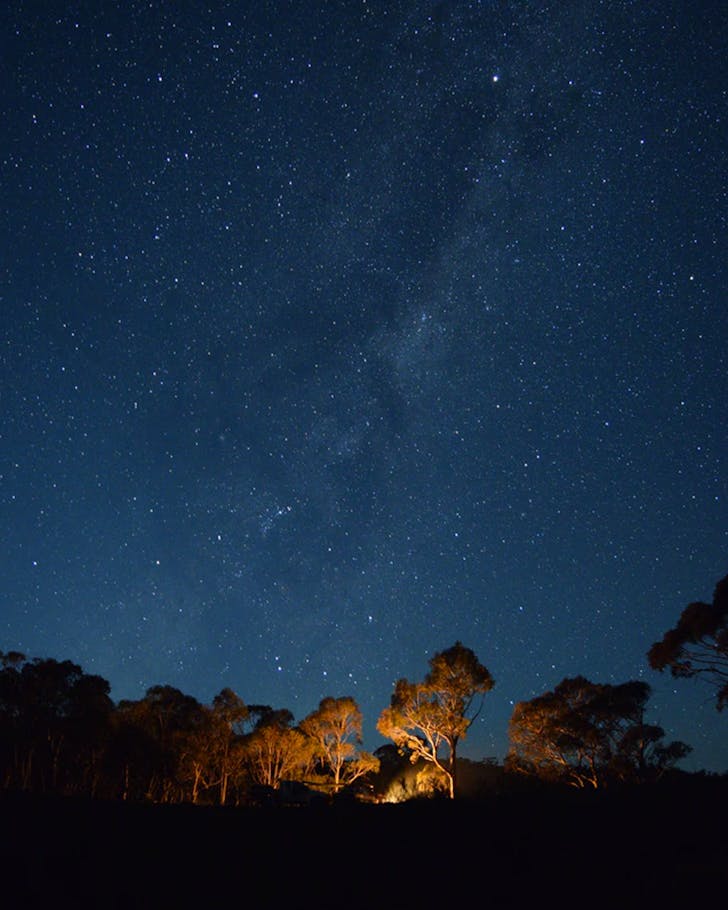
Mudgee Observatory
Mudgee
Astronomers are a passionate bunch, and John Vetter, the founder of Mudgee Observatory, is no exception to the rule. About 15 minutes drive out of Mudgee, the observatory is essentially a private observatory Vetter built himself on his own property (including a towering fence of trees that shield the site from the lights of town).
His telescopes are used by researchers from the University of NSW, the staff of Sydney Observatory and members of the Sutherland Astronomical Society, and when we visited, Vetter showed us the Jewel Box Cluster, the Orion Nebular and the Omega Centauri globular cluster (a collection of about a million stars that looks like a firework). If you're after a personalised, educational experience, I highly recommend booking a tour here.
The Best Stargazing In Western Australia
Wula Gura Nyinda Cultural Tous
Shark Bay
If you thought stargazing was just about pointing a telescope skywards, Wula Gura Nyinda proves it can be so much more. The Didgeridoo Dreaming Tour in Monkey Mia blends ancient storytelling, cultural knowledge and the hum of the didgeridoo under the stars.
You’ll learn about the Gutharraguda—the original name for Shark Bay, meaning 'two waters'—and there's a good chance you'll see kangaroos, echidnas and other native animals getting up to their after-dark antics. I don't need to tell you that this experience will give you a perspective on the land and sky that no guidebook could ever give you.
INSIDER INTEL
- BYO campchair or picnic blanket
Sand Dunes
Lancelin
I love this postcard-perfect little pocket of the west. By day, Lancelin’s dunes are basically a giant adult playground—endless white peaks made for sandboarding and quad bike adventures. But once the sun drops, that same landscape turns into one of the clearest, darkest stargazing stages within easy reach of Perth (we’re talking just 90 minutes from the city).
I’m calling it: there are few things better than capping off a day of dune-hopping with a blanket, a thermos and more stars overhead than you can hope to name
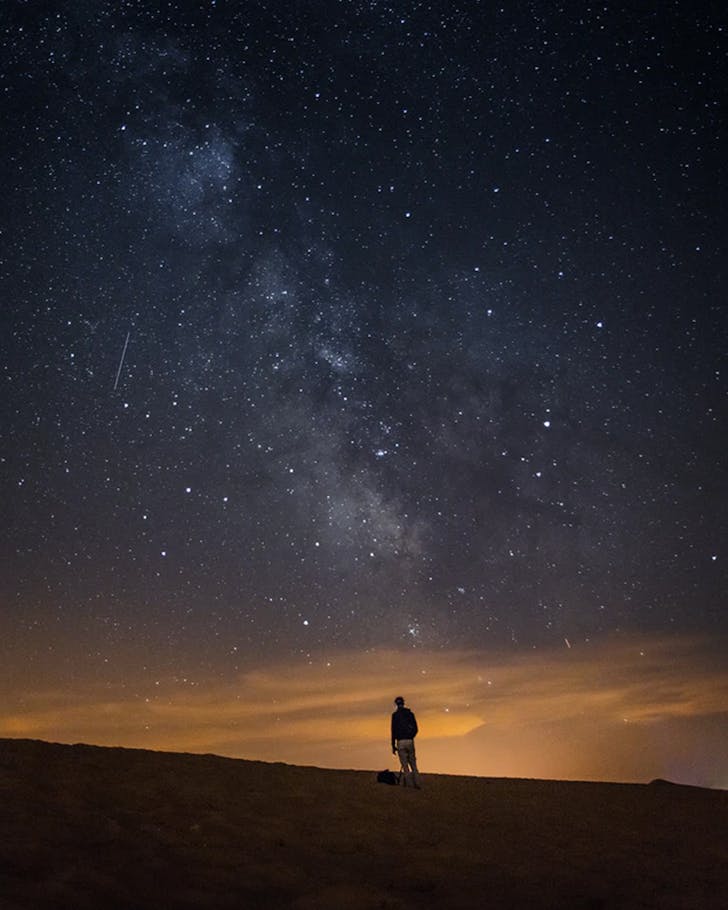
Wave Rock
Hyden
Wave Rock is Insta-famous for that giant granite swell frozen mid-curl, but hang around after the day-trippers clear out and you’ll see why stargazers are just as smitten. Four hours from Perth and with nothing but flat horizons stretching in every direction, this natural amphitheatre puts on a nightly show that’s galaxies beyond your average backyard sky.
I've only done it once, but lying back against a 2.7-billion-year-old rock and watching the Milky Way blaze overhead is a core memory I'll have forever.
The Pinnacles Desert
Western Australia
If otherworldly is the brief, the Pinnacles absolutely deliver. About two hours north of Perth in Nambung National Park, this eerie limestone landscape looks like a scene straight out of a sci-fi flick, even more so once the sun dips and the stars punch through the darkness.
By day you can wander the sandy trails between the spires or cruise the driving loop, but the real magic kicks in after dusk. I'd recommend booking one of the many star gazing tours operating in the area, many of which include a sunset dinner, plus a detour through the Lancelin sand dunes.
The Best Stargazing Victoria
Lake Tyrell
Sea Lake
Lake Tyrrell might be Victoria’s worst-kept secret, but don’t let the Instagram hype fool you: this 120,000-year-old salt lake is genuinely one of the dreamiest stargazing spots in the country. The cracked white basin is hugely impressive when the sun is up, and it's only elevated after dark.
I've been told you can even see the dark nebulae—those dense interstellar clouds that are impossible to spot anywhere near the city. For those who like a touch of luxury with their cosmos, the newly installed sky lounge has 13 reclining seats along the boardwalk, angled perfectly so you can soak in the glittering heavens without craning your neck.
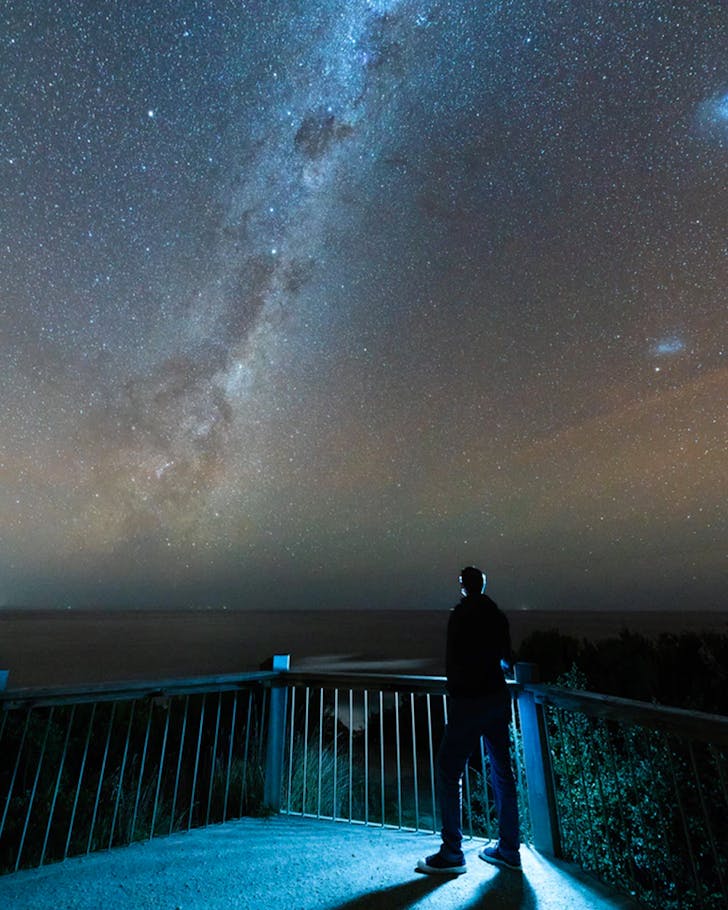
ASV Leon Mow Dark Sky Site
Ladys pass
In the middle of absolutely nowhere, the ASV (Astronomical Society of Victoria), is not the easiest place to reach, you can believe me when I say it’s worth every twist and turn. Home to Victoria’s two largest telescopes, the skies here are brighter and more detailed than nearly anywhere else in the country. Plan ahead though: access is limited to twice a year, in March and December, making it a bucket-list kind of stargazing mission
If you’re serious about stargazing, I’d carve out a few nights at the on-site accommodation. You’ll need to be a member to make it happen, but you'll be able to stare at the sky all night long.
Grampians (Gariwerd) National Park
Victoria
A few hours’ drive from Melbourne, the Grampians is my pick for when you want a little adventure alongside your star show. The national park as world-famous hiking trails but also delivers next-level night skies once the sun goes down. From April to September the nights are longer and cooler, which usually means crisp, cloud-free views of the Milky Way (just don’t forget a beanie; winter here can be brisk).
There’s no shortage of lookouts and open spaces to set up. Reed Lookout is a classic for sunset-into-stargazing sessions, while Boroka Lookout gives you wide panoramas with minimal effort. For something quieter, the Dunkeld Arboretum offers mirror-like reflections of the stars on still water, and One Tree Hill near Ararat dishes up 360-degree views.
You might also like:
- The Best Camping Spots In Australia
- The Best Places To Stay In 2025
- The Best Road Trips To Take In Australia
The Best Stargazing Queensland
Yaagurli Tours
Burketown
Yaliya means “sky” in the local Gangalidda language and this tour focuses on Indigenous storytelling under the stars (plus stargazing with exclusive access to Australia’s largest salt pans). You’ll get to uncover the sheer beauty of the night sky through state-of-the-art telescopes your local Gangalidda guide will share Dreamtime stories and their cultural interpretation of the universe in accordance with the phases of the moon.
Double Island Point
Sunshine Coast
Off the beaten track, Double Island Point delivers beach-front stars like few places can. The long stretch of sand and sky, minimal nearby light sources and a historic lighthouse setting the scene on the rugged coastline between Rainbow Beach and K’gari makes this an ideal spot once darkness falls.
You'll need 4WD to access parts by beach, but I can't think of a much better way to spend an evening cuddling up on the beach with the ocean mirroring the sky in front of you. Be sure to check the tide times in advance and bring everything you need, then settle in for an unforgettable canopy of stars, waves and maybe even the distant glow of a galaxy or two.

Moreton Island
Moreton Bay
Just over an hour by ferry from Brisbane, Moreton Island (Mulgumpin) is your ticket to wild skies without heading deep into the outback. With giant dunes, endless beaches and barely a flicker of artificial light, it’s a favourite for campers chasing a true dark-sky experience.
Bring binoculars, maybe a telescope and don’t forget warm layers – even on the balmiest of nights,i it can get surprisingly chilly down here on the coast. I also recommend choosing a spot well away from resort lights or powered campsites to get that deep-sky drama.
The Best Stargazing In South Australia
River Murray International Dark Sky Reserve
River Murray
Stretching across more than 3,000 square kilometres in the Murraylands, the River Murray International Dark Sky Reserve is Australia’s first officially accredited Dark Sky Reserve and one of the darkest places on the planet. Low rainfall, wide open plains and almost no artificial light create an atmosphere where the Milky Way practically leaps out of the sky, with riverbanks and conservation parks across the region providing countless vantage points to soak it all in.
Guided tours and astro experiences run year-round, but even a simple campfire evening will have you spotting shooting stars, nebulae, Saturn's rings and maybe even the hazy Magellanic Clouds with jaw-dropping clarity.
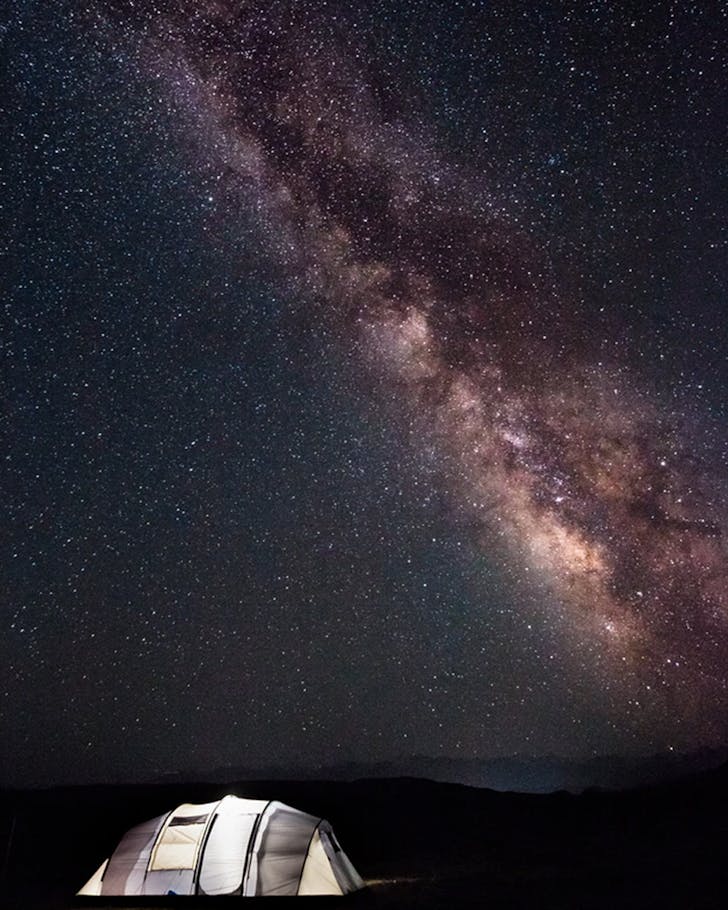
Dhilba Guuranda-Innes National Park
Yorke Peninsula
You can quite literally explore the universe from one of South Australia’s most popular coastal destinations. Next time I'm on the Yorke Peninsula, I'll be hitting up Dhilba Guuranda-Innes National Park, a secluded sanctuary for stargazers. Far from city lights, this rugged coastal reserve delivers some of the darkest skies in the state, which means the stars shine bright enough to cast a faint glow over the dunes.
Pitch your tent at one of the eight campgrounds scattered through the park and you’ll have front-row seats to the universe. In the morning, there's shipwreck trails, salt lakes and surf breaks to explore before you do it all again after dark.
Experience Adelaide’s starry night skies →
Lincoln National Park
South Australia
Down on the tip of the Eyre Peninsula, Lincoln National Park delivers big-time when it comes to star power. By day you’ve got rugged coastlines, hidden coves and some of the bluest water in the country; by night, it’s all about a glittering southern sky up above.
I'd be pitching a tent at one of the beachside campgrounds—Fisherman Point and September Beach are classics—or drive out to Wanna Lookout for next-level views. On a clear night you’ll catch the Milky Way blazing over the ocean, with zero city lights to spoil the show. Extra points if you pack a late-night snack and spot a kangaroo or two on the moonlit drive back.
The Best Stargazing In Tasmania
Cradle Mountain
Cradle Mountain-Lake St Clair National Park
Cradle Mountain has long been on my wish list, partly for the hiking but mostly for the night sky. With some of the cleanest air on Earth and virtually no light pollution, this alpine national park is a stargazer’s dream. On crisp nights, the Southern Cross sparkles like a jewel, and in the right season, you might even score a glimpse of the Southern Lights rippling in shades of green and purple.
By day, trek around Dove Lake or tackle the Overland Track; by night, rug up and let the silence of the Tasmanian wilderness settle around you. Whether you’re a seasoned astrophotographer or just someone who likes making wishes on meteors, the sheer clarity here is unforgettable.
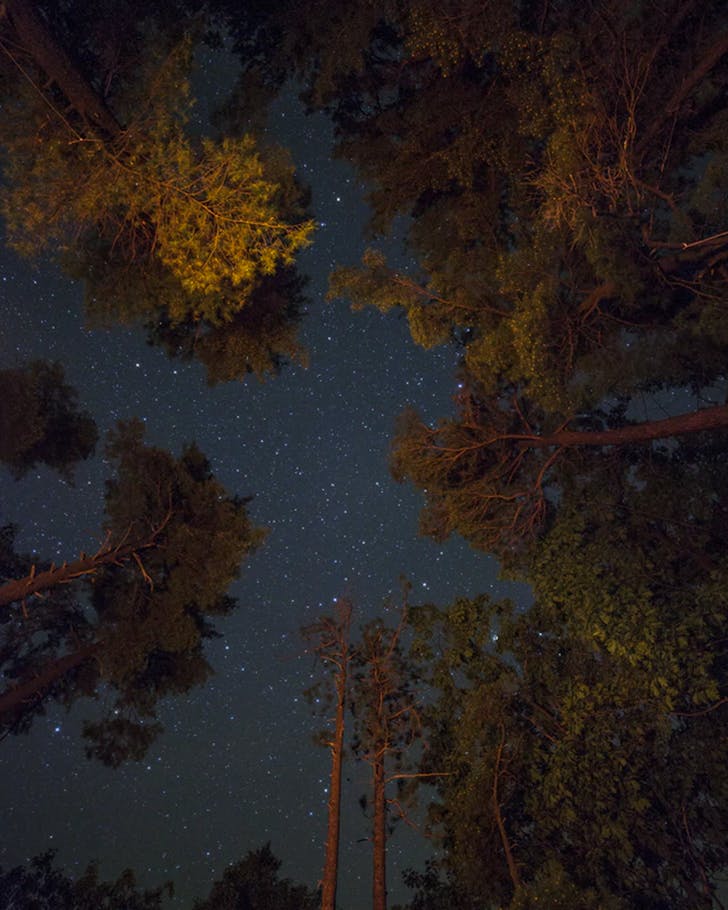
Mount Wellington
Tasmania
I know that Hobart doesn't exactly scream 'stargazing hotspot', but Mount Wellington (kunanyi) proves otherwise. A quick 30-minute drive from the city lands you 1,200 metres above sea level, where the air is crisp, the temps are chilly and the stars shine like they’ve been freshly polished.
Head to the Pinnacle Lookout for a wraparound view of the city lights below and the southern sky above, on the right night you might even catch the Aurora Australis doing its glowy green-and-purple thing. Just pack layers and a thermos; the mountain is notorious for surprise cold snaps and winds that could steal your beanie. it is Tasmania, after all.
The Best Stargazing In The Northern Territory
Uluru
Red Centre
Standing beneath the desert sky at Uluru is the kind of experience that lodges itself in your memory forever. Out here, hundreds of kilometres from the nearest city, there’s zero interference from artificial light and the stars seem close enough to touch. Guides lead astronomy tours that weave Indigenous stories with modern science, giving context to every cluster and constellation overhead.
I haven’t made it to the Red Centre yet, but imagining the Magellanic Clouds swirling above that giant sandstone monolith gives me goosebumps. Add this to your bucket list.
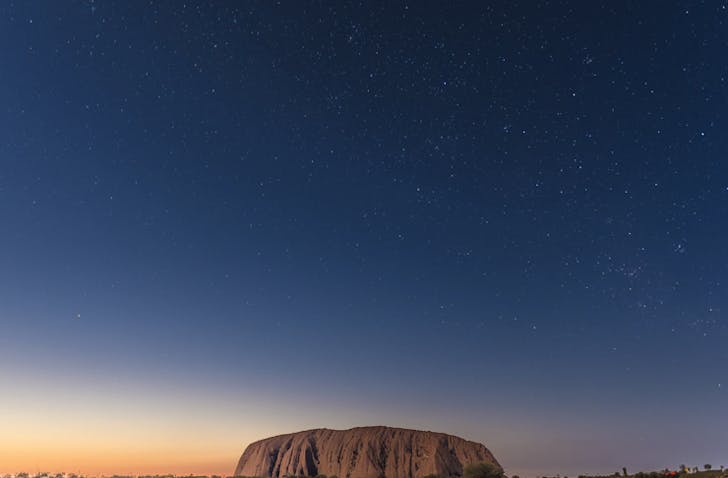
East MacDonnell Ranges
Northern Territory
About an hour east of Alice Springs, the East MacDonnell Ranges are the quieter, wilder cousin to the West Macs, and that’s exactly why they’re such a treat for stargazing. Think dramatic red cliffs, sandy riverbeds and, crucially, a dark night sky. I'd be packing a camp chair or rolling out a swag to watch the Milky Way sprawl across the desert.
Daylight hours aren’t too shabby either. Hike the gorges at Trephina, check out ancient Aboriginal rock art at N’Dhala Gorge, then stick around for the main event when the stars come out swinging.
The Best Stargazing In Canberra
Mulligans Flat Woodlands
Forde
Canberra might have a reputation for politics, but it also boasts some of the clearest night skies in the country. At Mulligans Flat Woodland Sanctuary, you can join a twilight tour to spot endangered wildlife before the stars steal the show. Guides point out constellations and planets while you wander the protected bushland, with endangered critteres creeping and crawling around you.
Who knew that watching a sugar glider glide past while Saturn sparkled above could deliver such a rush?!The sanctuary is peaceful, untamed and just minutes from Canberra’s centre—a reminder that you can chase the cosmos without venturing far from civilisation.
The Best Stargazing On Norfolk Island
Gold Level Dark Sky Town
Norfolk Island
I might be a little jealous of anyone who calls this island home. With virtually no light pollution, their backyard sky has earned official Gold-Level Dark Sky status. FromMount Pitt and Mount Bates' 360° views to Emily Bay's pontoon reflecting the stars, you’ll find countless natural observatories scattered across the island.
Bring a picnic rug, kick back and let the Southern Hemisphere’s brightest constellations reveal themselves. Whether you’re chasing the Milky Way, a rare meteor shower or just a quiet night under the cosmos, Norfolk Island serves up stargazing on a truly cosmic scale.
Got outdoor adventures on your mind? Check out:
- Australia’s Best Hikes And Walks
- Australia’s Dreamiest Under-The-Radar Beach Towns
- The Best Hotel Pools In Australia
Image credit: Destination NSW, Clarisse Meyers, Heiko Otto, Mahkeo Jacob Dyer, Daniel Weiss, Jairph, Evan Brocket, Eugenie Lai
